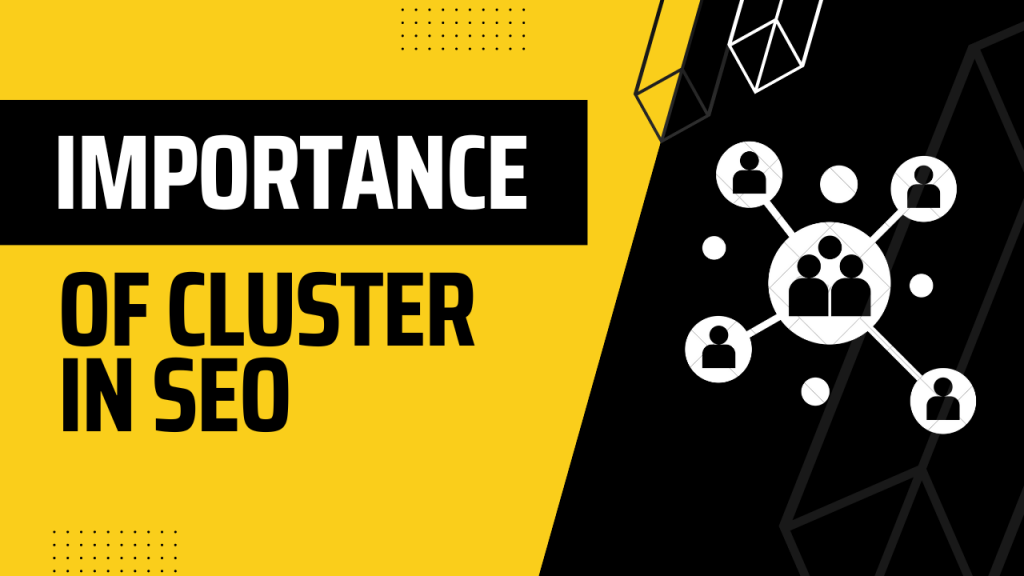what is cluster and why it’s important for SEO?
Clusters of content do more than just sprinkle keywords across the text and hope Google finds them. Instead, a content cluster SEO approach leverages internal linking and subject modeling to enhance your content’s user experience and increase search performance.
Let’s discuss the ins and outs of content clusters and how they support your SEO efforts.
What are content clusters?
The contrast between a site with and one without content clusters is the greatest approach to demonstrate what a content cluster performs.
Without content clusters, it’s likely that your SEO content production efforts would consist primarily of praying that anything will stick while shooting in the dark. You can just go for it after coming up with a hazy content concept or an aspirational term you want to hit in a piece of content. And you repeat that process for many concepts and keywords.
Before you realize it, you’ve accumulated a sizable, disorganized repository of blogs on several subjects only loosely linked to your products or business. It would presumably seem as follows if you could physically pick them up and arrange them out on a table:
There are surely many jewels in there, even without a coherent content strategy to attract their attention. Even yet, Google doesn’t appear to see you as an authority in your field or to value the high-caliber information you have created.
Why it is important for SEO?
The creation of content clusters has several advantages for both better user experience and SEO. The following are only a few of the main advantages of content clusters:
Simplify the site architecture
Through effective internal linking, topic clusters benefit search engines like Google and make it easier for them to locate your content.
Increased positional rankings
According to HubSpot’s testing, more connections between similar pieces of content enhanced SERP (search engine results page) ranks and boosted impressions.
Develop your authority and rule your niche.
When sites are linked together into content clusters, Google is better able to grasp the relationships between them. If Google notices that your site is producing a lot of information on a single topic, it will view you as a more credible authority in the field. This is also referred to as a semantic SEO plan and will aid in increasing your E-A-T signals to Google and enhancing your search rankings.
You may use an off-site SEO approach to create backlinks to your cluster content to assist in further increasing authority.
Lengthen user engagement and lower bounce rates
By including internal links that go from one piece of content to another, you can keep visitors on your website longer, lower bounce rates, and show search engines that your site is worthwhile.
Improve the user experience
Topic clusters provide consumers with a thorough response to their inquiries by offering a vast library of data on related topics and fulfilling their search intent. Even questions they weren’t aware they had may be resolved by it.
Grow the funnel
By establishing content clusters, you may increase the number of organic visits to your website in the awareness stage of the marketing funnel, where they will ideally progress through the funnel to conversion.
In the same way, you can employ pillar pages as landing pages to provide users with helpful content in return for their contact information and email addresses. Use this to your advantage as, according to HubSpot, 90% of consumers prefer downloading a PDF over reading lengthy information on a website.
Improve content production efficiency
You can create content for your site considerably more quickly if you write about themes that are linked to it. Cluster content will be considerably simpler and quicker to produce once the bulk of the research for your pillar content has been completed.
Increase revenue
Visitors to your website will be directed to your sales pages and will be closer to converting if you create a content cluster centred around a commercial page or a website that earns a lot of income. Additionally, as content marketing already has the capacity to provide a sizeable return on investment, this is guaranteed to win over your decision-makers.
Conclusion
Examining the current content on your website may be informative (and time-saving) before you start generating new content clusters. You will frequently have some pre-existing content to use and adapt for your content clusters.
In some cases, all you need to do is create a customized pillar page to link to or just add some more internal links to your sites. Additionally, you could discover that some of the content on your website is redundant or of little value and can be removed or combined with other pieces of content.
To avoid creating duplicate content needlessly, it is also useful to go over your existing content before creating a content cluster.





